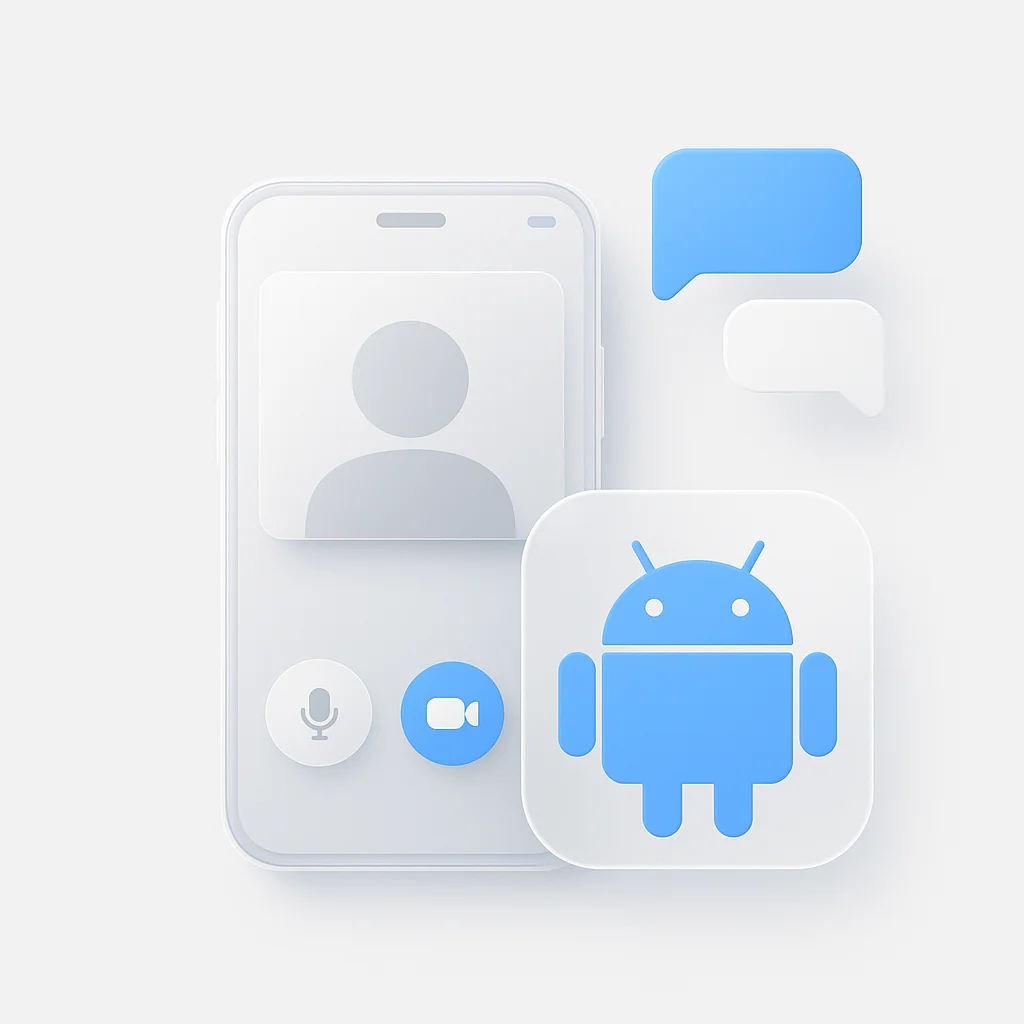Are you tired of losing those precious moments shared during FaceTime calls? Say goodbye to the frustration and hello to a game-changing solution! Whether you’re an iPhone or Mac user, we’ve got you covered with the ultimate guide on how to effortlessly record FaceTime calls with crystal-clear audio. Get ready to capture and cherish those unforgettable conversations like never before!
Introduction
FaceTime, Apple’s pioneering video calling application, has become an essential communication tool in our digital age. With its high-quality video and audio capabilities, it seamlessly connects people across the globe, whether for a casual chat, a business meeting, or a family get-together. FaceTime’s simplicity and accessibility make it a go-to app for millions of users.
Recording FaceTime calls, particularly with audio, has gained significance for many reasons. It helps capture important conversations, memorialize cherished moments with loved ones, or even document key points of a professional meeting. Yet, the process of recording FaceTime calls with audio can be a tricky endeavor, especially for those unfamiliar with Apple’s unique operating system.
This article aims to serve as a comprehensive guide to recording FaceTime calls with audio on both iPhone and Mac. It will provide step-by-step instructions, tips, and solutions to common problems, making the process accessible to all. Whether you’re a tech-savvy user or a novice, this guide aims to equip you with the knowledge you need to successfully capture your FaceTime calls.
Guide to Recording Facetime calls
1. Prepare for Recording:
On a Mac, open the FaceTime application.
Alternatively, if you’re using another device, open a FaceTime link in the Chrome browser.
2. Launch ScreenApp:
Navigate to ScreenApp’s using your preferred web browser.

3. Start Recording the Call:
Once you’re in the FaceTime call, switch to the ScreenApp window.
Select the option to record the specific window or screen where FaceTime is running.
Click ‘Start Recording’ to begin capturing the FaceTime call.
4. Automatic Saving and Transcription:
After you finish the call and stop the recording, ScreenApp automatically saves the video file.
The recorded video will also be transcribed, and AI notes will be generated for your convenience.
Optional Using QuickTime Player
- Open QuickTime Player.
- Click on “File,” then select “New Screen Recording.”
- Click on the arrow next to the record button and select “Built-in Microphone.”
- Click “Record.”
- Open FaceTime and make your call.
- To stop recording, click the stop button in the menu bar.
Handling Audio Settings for FaceTime Calls
While QuickTime Player and the Screenshot toolbar record system audio, your Mac’s built-in microphone is used to record your voice. Make sure your surroundings are quiet for the best audio quality.
Saving and Accessing the Recorded Calls
With both the Screenshot toolbar and QuickTime Player, your recording is automatically saved to the location you selected in the options. By default, it’s the desktop.
Tips and Tricks for Better FaceTime Call Recording on Mac
- Ensure you have a stable internet connection for the best video call quality.
- Consider using an external microphone for better audio recording quality.
- Close unnecessary apps to ensure your Mac runs smoothly during the call.
Troubleshooting Common Problems in Mac Recording
- If your recording has no sound, make sure the correct microphone is selected in the recording options.
- If QuickTime Player can’t record the screen, check that it has Screen Recording permission in System Preferences > Security & Privacy > Privacy.
- If the recording is choppy, try closing other apps to free up system resources.
In the upcoming sections, we’ll compare recording FaceTime calls on iPhone versus Mac and provide answers to frequently asked questions. Stay tuned!
How to Record FaceTime Call with Audio on iPhone
Basic Requirements and Setup
Before you start recording FaceTime calls with audio on your iPhone, you need to ensure a few things:
- You have an iPhone with iOS 11 or later, as the Screen Recording feature was introduced in iOS 11.
- The Screen Recording feature is added to your Control Center for easy access.
To add Screen Recording to your Control Center:
- Go to Settings > Control Center > Customize Controls.
- Find Screen Recording in the “More Controls” section and tap the green ’+’ button beside it.
Step-by-Step Guide to Using the Screen Recording Feature
- Swipe up from the bottom of your screen (or down from the upper right corner on iPhone X or later) to access the Control Center.
- Long press the Screen Recording button.
- Tap the “Microphone” button to turn it on (it will become highlighted) to ensure audio is captured.
- Tap “Start Recording,” then wait for the three-second countdown to complete.
- Exit the Control Center and open FaceTime to start your call.
- To stop recording, tap the red time indicator at the top of your screen, then tap “Stop.”
Handling Audio Settings for FaceTime Calls
By default, your iPhone’s microphone will record your own voice, but to record the audio of the person on the other end of the call, you’ll need to use the speaker mode during the call.
Saving and Accessing the Recorded Calls
After stopping the recording, your video will automatically be saved to your Photos app. You can access it by opening the app and scrolling to the bottom of the “Recent” album, or by visiting the “Screen Recordings” album.
Tips and Tricks for Better FaceTime Call Recording on iPhone
- Ensure a stable internet connection to maintain the call quality.
- Use headphones with a built-in microphone for better audio recording quality.
- Try to conduct your call in a quiet environment to reduce background noise.
Troubleshooting Common Problems in iPhone Recording
- If your screen recording doesn’t capture audio, ensure the microphone is turned on in the Screen Recording settings.
- If the Screen Recording button is greyed out, try restarting your iPhone.
- If you can’t find your recording, ensure you have enough storage space on your iPhone. Screen recordings can consume a significant amount of space.
In the next section, we’ll look at how to record FaceTime calls with audio on your Mac. Stay tuned!
How to Record FaceTime Call with Audio on Mac
Basic Requirements and Setup
To record FaceTime calls with audio on your Mac, you need to ensure the following:
- You have a Mac running macOS Mojave or later as the Screenshot toolbar was introduced in Mojave.
- You have QuickTime Player installed on your Mac. It comes pre-installed on all new Macs, but if you’ve removed it, you can download it again from the App Store.
Differences Between iPhone and Mac FaceTime Call Recordings
Comparison of Features and Functionality
While both iPhone and Mac offer efficient ways to record FaceTime calls, there are differences in the features and functionality between these two platforms.
- iPhone: Recording on iPhone is straightforward with the built-in Screen Recording feature in the Control Center. However, it only records external audio, meaning that you have to put your call on speaker mode to record the audio from the other party.
- Mac: The Mac offers two built-in methods for recording — the Screenshot toolbar and QuickTime Player. Both can capture system audio, and QuickTime Player even offers some simple editing features. However, using them can be a little more complex compared to the iPhone’s Screen Recording feature.
Pros and Cons of Recording on Each Platform
Recording on each platform has its advantages and disadvantages.
- iPhone Pros: Simple and easy-to-use, accessible right from the Control Center, and easily integrates with the iOS ecosystem.
- iPhone Cons: Does not record system audio, may require you to put the call on speaker mode, less control over the video format and quality.
- Mac Pros: Can capture system audio, offers more control over the recording with two different methods, recorded files can be directly saved in various locations, and QuickTime Player provides some basic editing features.
- Mac Cons: More complex to use, and requires more system resources which can lead to lagging if your Mac is low on resources.
Whether you should record your FaceTime calls on iPhone or Mac depends largely on your specific needs, resources, and the level of control you desire over the recording and post-processing stages.
Advanced Audio Recording Settings
Exploring Additional Microphone Options
Both iPhone and Mac provide options to use external microphones for recording audio, enabling higher sound quality. For iPhone, you could use wired earbuds or wireless earphones like AirPods. Mac users have an even broader range of options, from USB microphones to professional-grade XLR microphones with an audio interface.
Adjusting Volume Levels for Optimal Audio Recording
The volume levels of both your microphone and the FaceTime call itself can impact the audio quality of your recording. Ensure your volume is at an appropriate level — not too loud to cause distortion, and not too quiet to be inaudible. On iPhone, you can adjust these in Settings > Sounds & Haptics. On Mac, go to System Preferences > Sound.
Utilizing External Microphones for Enhanced Audio Quality
External microphones can significantly improve the quality of your audio recordings. If you regularly record FaceTime calls for professional use, it might be worth investing in a good-quality microphone. Choose one that best suits your needs — for instance, a Lavalier mic for one-on-one calls or a condenser mic for high-quality audio recording in a quiet environment.
Third-Party Apps for Recording FaceTime Calls
Review of Popular Third-Party Apps and Their Features
While Apple’s built-in options for screen recording work reasonably well, several third-party apps offer more advanced features. Apps like TechSmith’s Camtasia or AceThinker’s iPhone Screen Recorder (for iPhone) and ScreenFlow or Call Recorder for FaceTime (for Mac) provide powerful recording and editing tools.
Comparing Third-Party Apps Versus Built-In Recording Methods
Compared to built-in recording methods, third-party apps generally offer more control over the recording process, better audio and video quality, and additional features like direct cloud storage, real-time editing, and more. However, they also require additional downloads, can be costly, and may have a learning curve.
The Pros and Cons of Using Third-Party Apps for Recording
- Pros: Enhanced control over recording, advanced editing features, improved audio and video quality, and potential for cloud storage integration.
- Cons: May require additional downloads, can be expensive, may require a learning curve, and possible compatibility issues.
Remember, while third-party apps can offer expanded capabilities, Apple’s built-in methods are more than capable of most FaceTime call recording needs.
Managing and Editing Recorded FaceTime Calls
How to Trim and Edit Recorded FaceTime Videos on iPhone and Mac
Once you’ve recorded a FaceTime call, you might want to trim or edit the video.
- iPhone: Open the Photos app and select your recording. Tap Edit, and you’ll see a slider at the bottom of the screen. Drag the ends of the slider to choose the portion of the video you want to keep, then tap Done.
- Mac: Open your recording in QuickTime Player, then select Edit > Trim (or press Command + T). Similar to iPhone, adjust the yellow slider to select the portion of the video you want to keep, then click Trim.
Managing Storage for Your Recordings
Video recordings can take up significant space on your device. Regularly backing up and removing old recordings can help manage your storage. iCloud is a convenient option for backing up, but you can also use an external hard drive or other cloud storage services.
Sharing and Exporting Options for Your Recordings
You can easily share your recordings directly from your iPhone or Mac through various methods, including AirDrop, Mail, Messages, and more. To export a video, you can use the Share button on iPhone or the File > Export As on Mac.
Converting Recorded Calls to Different Formats
If you need your recording in a specific format, there are many online converters available. Alternatively, apps like iMovie (Mac) or Video Converter App (iPhone) can convert your videos to various formats.
Tips to Improve Video Quality During FaceTime Calls
Ensuring a Good Lighting Setup
Good lighting is crucial for video calls. Ensure your face is well-lit, but avoid harsh lighting that creates strong shadows. Natural light is often the best option.
Recommendations for Internet Speed and Connectivity
A stable and strong internet connection is critical for clear video calls. If possible, use a Wi-Fi connection rather than cellular data. If you’re experiencing issues, try moving closer to your router or disconnecting other devices from the network.
Choosing the Best Camera Angles
Position your camera at eye level for the most flattering angle. Try to keep your device steady — use a stand or prop it up against something if needed.
By following these tips, you can improve the quality of your FaceTime calls, making for better recordings.
Maintaining Privacy and Security When Recording Calls
Encryption and Security of FaceTime Calls
Apple has always prioritized the security of its users. FaceTime calls, whether audio or video, are encrypted end-to-end. This means that only the sender and the receiver can access the call’s content, ensuring your conversations remain private.
Storing Recordings Securely
When you’ve recorded a FaceTime call, it’s essential to keep that data secure. Always save your recordings to trusted and password-protected locations. iCloud provides encrypted storage, but if you’re using other cloud services or external drives, ensure they are secure and reputable.
Awareness of Phishing and Scam Calls
Always remain vigilant when answering calls from unknown numbers. Never disclose personal information during a call unless you’re sure of the caller’s identity and purpose. Consider using identity theft protection services like Aura to safeguard your personal information and reduce the risk of fraud.
Future of FaceTime and Call Recording
Upcoming Features or Changes Related to FaceTime (based on official Apple announcements)
While we can’t predict specific future FaceTime features as of the time of this article, Apple regularly updates its software and introduces new functionality. Keep an eye on the official Apple website or trusted tech news sources for any announcements.
Predicted Trends in Video Call Recording
Video call recording is likely to continue evolving, with improvements in video and audio quality, better editing and storage options, and increased security measures. The demand for these features is expected to grow as remote work and virtual meetings become more commonplace.
Reader’s Stories and Experiences
Sharing User Experiences and Stories Related to FaceTime Recording
Many of our readers have shared how recording FaceTime calls has been beneficial to them. Some use it to capture memories with loved ones, while others record calls for business meetings or creative collaborations.
How Readers Have Used These Recordings in Their Personal or Professional Life
One reader, a novelist, records brainstorming sessions and later revisits them for inspiration. Another reader, a long-distance grandparent, captures moments with their grandkids growing up. A project manager records team meetings to ensure no details are missed.
These stories highlight how versatile and valuable FaceTime call recording can be, extending its benefits beyond the call itself.
iPhoneMacToolsScreen Recording feature in Control CenterScreenshot toolbar or QuickTime PlayerInitial SetupAdd Screen Recording to Control Center from SettingsNo initial setup requiredAudio SettingsTurn on Microphone Audio in Screen Recording Control Center settingsSelect correct audio source before recordingSteps to Start Recording1. Swipe down from top right to open Control Center 2. Long press on the Screen Recording button 3. Tap Microphone button to turn it on (it will turn red) 4. Tap Start Recording1. Open Screenshot toolbar (Shift-Command-5) or QuickTime Player 2. Choose Record Entire Screen or Record Selected Portion 3. Click Options and ensure correct audio source is selected 4. Click RecordStopping the RecordingTap red status bar at the top of the screen and then tap StopClick Stop button in menu bar, or tap appropriate button in QuickTime PlayerAccessing RecordingsGo to Photos app and find the recordingRecording is automatically saved to desktop or specified locationTips and TricksEnsure sufficient storage space, keep device in Do Not Disturb mode to prevent interruptionsKeep unnecessary applications closed to prevent them from showing in the recording
Conclusion
As we reach the end of our comprehensive guide on how to record FaceTime calls with audio on iPhone and Mac, let’s recap the crucial points. We began with a basic understanding of the requirements and settings for recording on both devices. Then, we explored step-by-step processes to successfully record a FaceTime call with audio, along with various tips and tricks for optimal results.
Moreover, we discussed managing and editing recorded calls, where you learned how to trim, share, and convert your recorded videos. We also emphasized improving video quality and understanding advanced audio recording settings to enhance your FaceTime call recordings further.
Security and privacy are paramount, and we touched upon encryption, secure storage of recordings, and awareness about potential phishing and scam calls. We also invited readers to share their experiences with FaceTime call recording, illustrating its practical utility in different aspects of life.
Knowing how to properly record FaceTime calls with audio on both iPhone and Mac not only allows you to preserve precious memories but also serves practical purposes like keeping track of important business meetings or creative brainstorming sessions. It empowers you to revisit important moments, both personal and professional, and make the most out of your digital interactions.
Whether you’re a student, a professional, or just someone wanting to capture valuable moments, understanding the ins and outs of FaceTime call recording can undoubtedly come in handy. With this newfound knowledge, we encourage you to explore this feature and unlock new potential in your digital communication.






